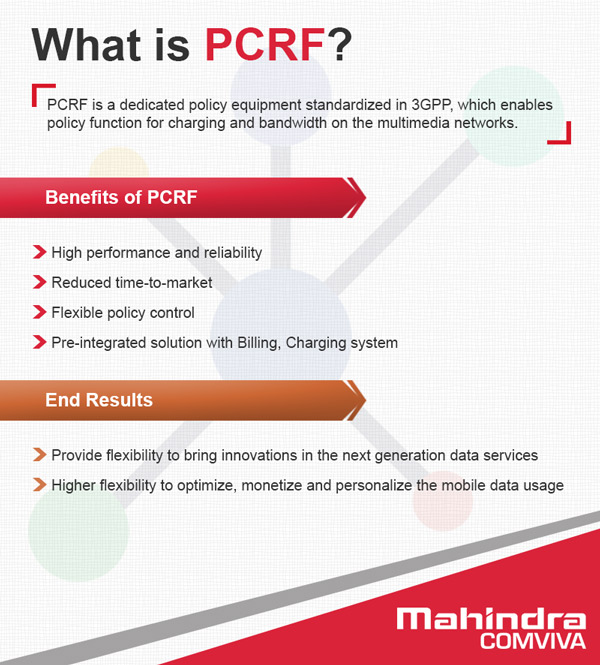The convergence of broadband services, smart mobile devices and virtually unlimited content has significantly altered the telecommunication market. This has resulted in a rapidly increasing demand for internet services. Alongside, it has also resulted in the explosion in usage patterns and data traffic, evolution of 3GPP, advancement in microchip technology and standardization benefits like freedom in choosing a service provider and cost reduction and increased benefits.
And thus, to remain relevant in this changing environment, operators in the telecommunication industry are addressing critical challenges in order to create new business models, transform their revenue streams radically and in turn, the business models and value chains are being modified consistently. Therefore, telecom operators must examine statistics to determine how and under what conditions the subscribers and the applications use the network resources in order to formulate the policies.
The policy rules between the application and the policy enforcement points are managed by the Policy server, which can add or re-configure policies in order to control and manage the Quality of Service (QoS), charging quota, admission control and optimization.
Various interfaces make the integration of PCRF with any network (mobile or fixed broadband network) easier. Since, the telecom operators will keep migrating from 2G to 3G to 4G networks in the coming years, the existing networks must operate efficiently and concurrently with the newer networks. As subscribers opt for portability between networks, the operators must maintain session visibility in order to be able to control sessions per subscriber dynamically.
PCRF addresses these challenges. It is a network agnostic solution (for wireless or wire line networks), which enables a multi-dimensional approach to create an innovative and lucrative platform for the service providers. It can be integrated with various platforms like billing, charging, rating, subscriber database and can also be deployed as a standalone entity.
What is PCRF Stand For?
PCRF stands for Policy and Charging Rules Function. It is a dedicated policy equipment standardized in 3GPP, which enables policy function for charging and bandwidth on the multimedia networks. Its a new term introduced alongside the publishing of 3GPP policy charging control (PCC) architecture. Often, it is also referred to as Policy Decision Function (PDF) or Policy Server.
Policy and Charging Rules Function (PCRF) has an increased strategic significance and wider potential role than conventional policy engines. The operators deploy PCRF as a policy solution that considers actual usage scenarios of the user and combine it with charging and billing system while providing differentiated policy control and tariff packages.
As a policy tool, PCRF plays a central role in making policy and charging rules based on subscribers usage, location, status roaming and other factors. It implements flexible policy control for mobile, fixed-line, and IP multimedia subsystem (IMS) services. Being an important part of IMS architecture, PCRF integrates avalanche of information to and from various multimedia networks like portals, operational support system, and charge rules while automatically creating policy decisions for each active network subscriber.
The PCRF function serves as a part of the PCC architecture along with P-CSCF (Proxy Call Session Control Function) and PCEF (Policy and Charging Enforcement Function). These elements of the PCC architecture provide resource, access and Quality of Service (QoS)control.
PCRF is a significant part of the IMS architectures; however, it isnt exclusive to the 3GPP network in which its certified. It arrives pre-integrated in an IT server and works across wireless networks.
PCRF is also an important element in SPIT (Service Provider Information Technology). Interfacing with the main packet gateway, PCRF takes charging enforcement decision on its behalf. The centralized device can serve as a Policy Decision Point (PDP) for the mobile operator and can get as granular as an individual subscriber.
The PCRF architecture
PCRF comprises of three main components:
- Policy Servers- to provide the policy and charging management function
- Subscriber Profile Repositories (SPR)
- Configuration Central Management System (CMS) to centralize the provisioning and management of policy servers

Policy Server-
The PCRF server serves as the main server that processes the policy request from core network element or Operator Support System /Business Support System (OSS/BSS) in the real time. The Diameter based 3GPP, Sy, Gx, Gxx, Rx, Policy and Charging Rules Server, Policy Decision Platform, Sp and Sd Connectors, Subscriber Profile Cache and Subscription Management Service are important parts of the PCRF server. The rules engine of the Policy Server works as the standards based PCRF in the network. It functions on triggers, processes conditions and then executes proper actions based on the conditions. The rules engine can be evoked based on any interface trigger. Both GGSN and DPI via either the SOAP/XML interface or the Gx interface, the SPR via the Sp, also the application function via the Rx interface can activate the rules engine. The internal timers that support a range of time of day based applications/use cases can also trigger the rules engine. Policies can be developed rapidly using Policy Rules wizard.
Subscriber Profile Repositories (SPR)-
The main component to run PCRF server is SPR- Subscriber Profile Repository that is the repository to store all technical assets, business assets, and configuration items used by the PCRF Server also known as Central Management Server. Policys SPR is the policy solution database to store subscriber profile, quota, location and state information of the Policy Server to use in its policy implementation. In order to store subscriber profile information and intersession state information (e.g. usage and quota tracking), the SPR is deployed in networks. It should be implemented in a range of configurations according to the customer requirements.
Central Management System (CMS)-
To monitor and manage the PCRF Server and Repository Server there is centralized server node which is called as Policy Management Platform/Central Management Subsystem Central Management Subsystem. It is considered as the main part of Central Management Server to provide the OA&M functions. The Management Platform gives an integrated view of system alarms and logs and has SOAP/ XML API to interface to external systems. Add to this, PCRF server also has following components /functionalities:
- SPR Proxy subsystem For the management of internal SPR i.e. subscriptions and subscribers, this component exposes the Web Services API within PCRF Server.
- Load Balancer For PCRF servers, the load balancer is an important part in the distributed deployment environment. It provides the diameter application level load balancing capability.
Functioning of PCRF
Service providers use PCRF for automatic creation of policy and charging rules for subscribers. It becomes an important element in SPIT where it interfaces with the main packet gateway and takes charging-related decisions. For an example, using PCRF, service providers charge subscribers extra for quality guaranteed servicesor volume of usage of high-bandwidth applications during peak and off peak time sessions.
Organizations that offer PCRF functionality include the major equipment vendors: Alcatel-Lucent, HP Inc., Nokia Networks and Ericsson AB.
Benefits of PCRF
1. High performance and reliability
With its multi-dimensional approach, PCRF is a software component and operates in real-time to take policy decision and charge rules in a network. Its internal units work in load sharing mode which avoids single point failure and ensure reliable performance.
2. Reduced time-to-market:
The policy and charging solutions provided by PCRF enables service providers to efficiently manage their differentiated services and pricing models. With its flexible interface extension capability, it helps service providers launch a new service rapidly.
3. Flexible policy control
PCRF provides a framework that can implement and control wide range of policies that address subscriber location, address usage, roaming status, rating, subscriber class, and access network type.
4. Pre-integrated solution with billing, charging system
Being a single, consolidated database across multiple applications, pre-integrated platform gives a centralized view of the customer and the service. Thereby, PCRF provides unprecedented flexibility in rolling out and manage services at much faster pace.
Conclusion
PCRF enables service providers and operators with highest level of flexibility required to innovate in the era of next generation data services. It supports policy enforcement, service data flow detection and flow-based charging. Offering a comprehensive solution in order to allow a new generation service operator to extend multiple use cases, PCRF allows telecom companies to better control their services and alongside align their revenue with their resources.
As the service providers shift to LTE, PCRF policy will play a critical role in networking, becoming a strategic component in the race to manage and monetize LTE networks. Thus, to stay ahead in the competition, operators are making PCRF as part of their functioning.

